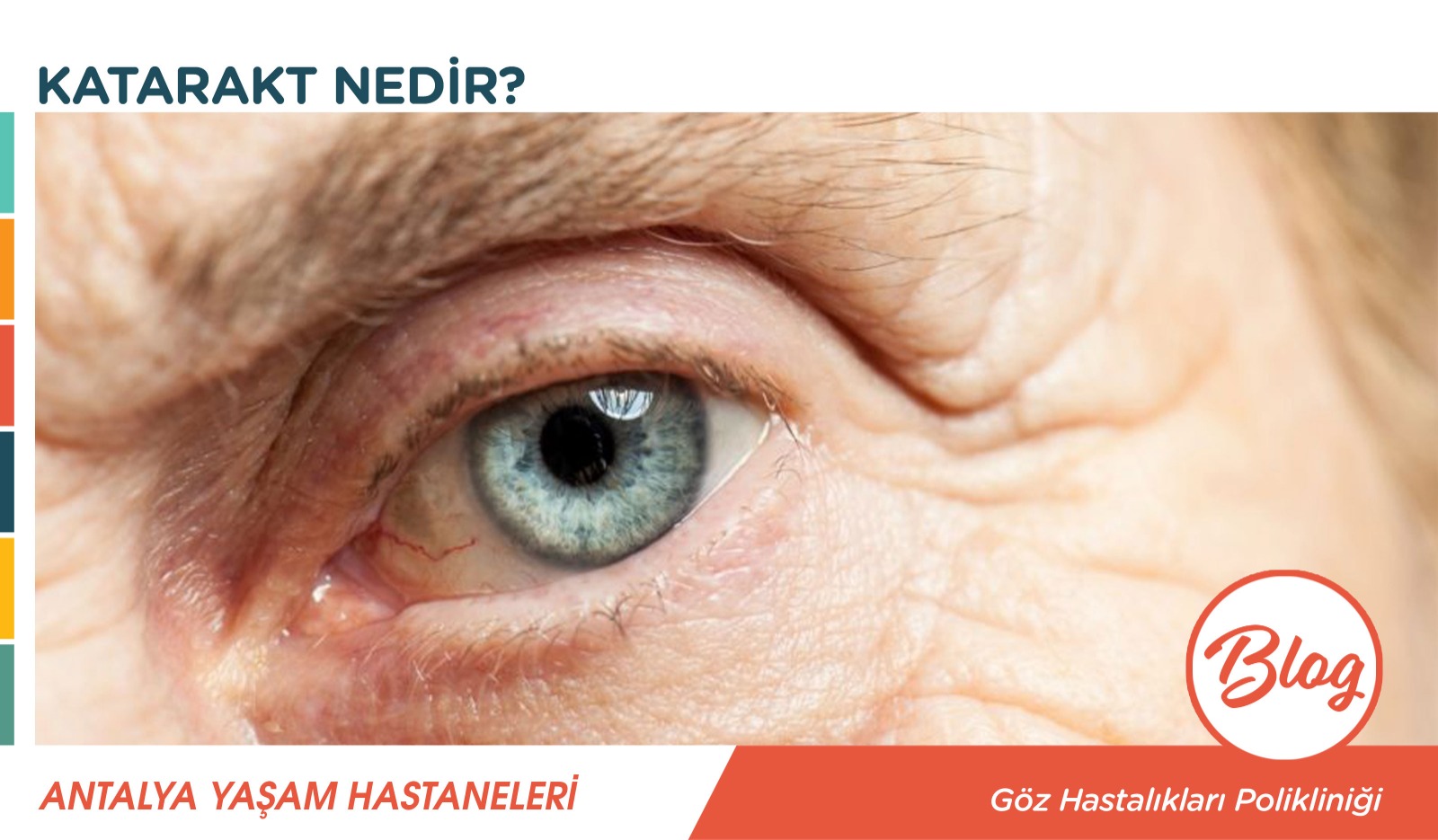What is cataract?
Each of our eyes has a lens that focuses the image to retina. Cataract implies a condition where the lens becomes cloudy due to various reasons. The most common etiology is aging in cataract.
What are causes of Cataract?
The lens enlarges, loses its transparency and stiffens due to aging. Various sight problems develop depending on the cloudy part of the lens. Some of these problems are low visual acuity, fading of colors or sensitivity to sunlight.
Cataract is usually secondary to aging. Moreover, cataract can be detected in a newborn infant due to exposure of fetus to certain viruses in intrauterine life or genetic factors, but cataract can also be detected in an adolescent, who takes cortisone drugs due to a rheumatic disease.
Other etiological factors of cataract are trauma and uncontrolled diabetes mellitus.
Environmental factors, such as intense sun exposure or smoking, can accelerate development of cataract.
How is Cataract Treated?
You can slow down onset of cataract by eating healthy, quitting smoking and wearing sunglasses. However, surgery is the only treatment option, when cataract is severe enough to decrease your vision.
Unfortunately, there is no eye drop or oral medications to treat cataract.
A surgery should be quickly planned for cataract that is diagnosed in infancy or childhood. Delays in management of the condition lead to lazy eye and strabismus.
Surgery is timed according to vision expectations of the person in adult patients.
For example, posterior subcapsular cataract that leads to sensitivity to light and glare can threaten safety in a driver. Even if the patient can see Letters well on evaluation of visual acuity, vision might have significantly decreased and therefore, surgery can be planned. Considering a patient who spends most of time at home, surgery can be postponed, as a significant problem is not expected in routine daily life.
Here, the decision should be made jointly by patient and physician. However, postoperative healing can prolong and high ultrasound energy used in the surgery can lead to decompensation of the cornea, if cataract has progressed and the lens has further stiffened. Therefore, it is not recommended to postpone cataract surgery unnecessarily.
We implant an artificial lens – intraocular lens – into the eye, after cloudy native lens of the patient is removed. Moreover, smart lenses that offers clear distant, near and intermediate visions can also be considered in selected patients. The lens to be used in surgery is preoperatively decided. Here, condition of the eye and needs and expectations of patient should be taken into consideration.
Today, cataract surgery is a day procedure that is successfully performed using all means of high technology. Patients are checked at least twice in first 5 days after surgery and an eye drop is usually used for a month. Cataract does not recur, but we leave the posterior capsule of native lens untouched to lean the new lens. The posterior capsule may rarely thicken, resulting with poor vision. In this case, we can manage the thickened capsule with laser therapy at outpatient settings.




